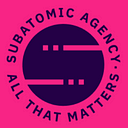MVP Development — Refining The Plan
In my last article, we talked about how to identify the different users of your MVP, identify the pain points your product can solve for these users and turn them into an evangelist for the product by including them in the planning process. In this piece, we’ll talk about the next step — how to take all the feedback, ideas and data you have and distill it into an initial scope that can be executed on and taken to market.
At this point, startup founders have many different voices influencing what they think is important for their product. The most important thing to do now is pick a direction and build something. Nothing is more valuable than user data and that data will continually alter your worldview during the life of the startup. That said, planning (and some educated guesses) will help you define a starting point that delivers quick value for you and your users. Some ways to begin include comparing feedback to your initial assumptions, narrowing scope and testing using low code or no code solutions.
Comparing User Feedback to the Initial Plan
By this time, user interviews have been done which should aid in understanding what users are looking for from a product in the space your chosen. How does that compare against what the original hypothesis or initial idea? How frequently did users ask for the same features in the product? Weighting the feedback and ideas from users can be helpful in deciding what do build first. Frequency of request for given features from users, perceived difficulty to implement and correlation to the company KPIs can be good parameters for a weighted matrix to order and quickly select which features to start with. Once the list is ordered, picking 1–3 key ideas from the set that can be prototyped quickly helps keeping the scope manageable.
Testing The Assumptions
Once the scope of the MVP is determined, the assumptions should be tested prior to building anything. There are a variety of ways to accomplish this and the most common is creating clickable prototypes. Tools like Figma and Balsamiq allow designers and non-technical founders an easy path to collaborating, ideating and creating semi-interactive user experiences. This accomplishes a couple of things; the flow of an application can be demonstrated in a clickable format to show users and potential investors the concept of the product but they can be translated directly into designs usable by the development team later.
Another approach to prototyping for feedback is using ‘low-code’ or ‘no-code’ application prototyping platforms. Despite requiring more technical know-how and having a slightly longer learning curve, platforms like Appian and Microsoft PowerApps are great platforms for achieving an application with minimal coding knowledge needed. This helps put something in the hands of potential users quickly, while keeping time and capital investment low and giving flexibility to interface and application flow.
Act on What You’ve Learned
Once sufficient user data is assembled, it may be time to start building a custom application that takes the business to the next level. Using all the learnings from preliminary customer interviews and your testing data from designs or no-code solutions, the business will understand more about how the users want to interact with a product and where (iOS versus Android versus web or a combination). Hiring your own team with an Agile, iterative workflow or engaging with an Agile development firm (like Subatomic) can quickly take your ideas and research to the market. Even after all this work, be ready to have your assumptions challenged by the initial users. Often things that seemed really important in the roadmap may be pushed back months later and new things that weren’t considered will surface that take priority. Remember to keep the feedback loop quick and frequent with users!
It’s important to remember not to jump right in with building a custom application without sufficient market feedback and testing with prospective users. Comparing to initial ideas, weighting user feedback, prototyping with design or ‘low-code’ tools and iterating quick with flexible and swift feedback loops with the market is a great way to ensure the dart hits as close to the bullseye as possible.
Ready To Build It?
If you’re ready to take your product to the next level or interested in learning more about our processes and experience at Subatomic, email us at hello@subatomicagency.com to get the conversation started! Our team of startup experts is excited to discuss your project.

